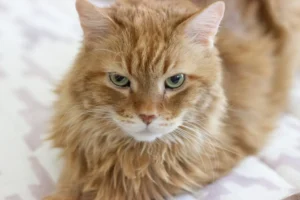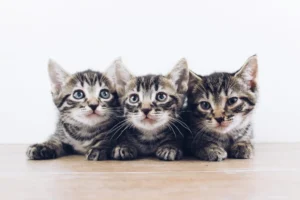Cats have long been revered by the ancient Egyptians for their mysterious and majestic nature. But why are cats so important to Egyptians?
Cats in Ancient Egyptian Culture
Cats as Symbols of Protection
Cats played a vital role in ancient Egyptian society, symbolizing protection and good luck. Bastet, the feline goddess, was revered for her ability to ward off evil spirits and safeguard homes. Egyptians believed that having a cat in the house would bring blessings and shield the family from harm. In fact, harming a cat was considered a serious crime punishable by law, showcasing just how significant these animals were in Egyptian culture.
The grace and agility of cats also made them powerful symbols of protection in mythology. Bastet was often depicted with the body of a woman and the head of a lioness or domestic cat, representing both ferocity and maternal care. This duality emphasized the cat’s role as a guardian and nurturer in Egyptian belief.
Cats were even mummified alongside their owners to ensure their protection in the afterlife. Their presence was thought to provide companionship and safeguard the deceased on their journey to the underworld. This deep connection between cats and the concept of protection highlights the profound respect and importance Egyptians placed on these enigmatic creatures.
Bastet: The Cat Goddess
Bastet , the revered feline deity, held a prominent place in Egyptian religion as the goddess of home, fertility, and protection. Worshipped for her nurturing and fiercely protective nature, she was often depicted with the head of a lioness or domestic cat. As a symbol of domesticity and guardianship, Bastet embodied the qualities Egyptians admired in their feline companions.
In addition to her role as a protector, Bastet was also associated with joy, music, and dance. She was believed to bring harmony and happiness to her devotees, offering solace in times of trouble and celebrating life’s joys. This multifaceted goddess symbolized the interconnectedness of protection, pleasure, and prosperity in Egyptian belief.
Bastet ‘s presence in daily life was felt through rituals, offerings, and festivals dedicated to her honor. People would seek her blessings for their homes, families, and endeavors, recognizing her as a source of strength and guidance. The enduring popularity of Bastet as a revered deity reflects the deep-seated significance of cats in Egyptian culture and spirituality.
Cats as Pest Control
Cats were highly valued by the ancient Egyptians for their remarkable ability to keep homes and granaries free from pesky rodents. These feline friends were like natural pest control experts, effortlessly hunting down and eliminating mice and rats that could wreak havoc on food supplies. Imagine having a fluffy companion who not only provides cuddles but also helps keep your home rodent-free—talk about a win-win situation!
Cat Mummies and Burials
In ancient Egypt, cats were not just household companions; they were revered beings deserving of special treatment even in the afterlife. The practice of mummifying and burying cats alongside their owners was a way to ensure a safe journey into the next realm. Can you imagine the bond between a person and their cat being so strong that they would want to be together even beyond death? It just goes to show the deep admiration and respect Egyptians had for these majestic creatures.
- Additionally, it’s fascinating to note that the ancient Egyptians believed that cats possessed magical powers and were sacred animals associated with the goddess Bastet. By honoring cats in death, they believed they were also honoring this powerful deity, further emphasizing the significance of these feline companions in their culture.
Influence on Modern Culture
Cats have always held a special place in the hearts of Egyptians, and this reverence continues to influence modern society’s perception of felines. Cats in ancient Egypt were associated with the goddess Bastet, who represented protection, fertility, and motherhood. This connection has led to cats being seen as symbols of mystery, grace, and independence in contemporary culture. The portrayal of cats in movies, books, and art often reflects the mystique and elegance attributed to them by the ancient Egyptians. Many people today still view cats with a sense of awe and admiration, thanks to the lasting impact of Egyptian beliefs.
Additionally, the popularity of cats on the internet and social media is a testament to their enduring appeal. The playful antics and aloof demeanor of cats continue to captivate people around the world. This widespread admiration can be traced back to the ancient Egyptians’ worship of these enigmatic creatures. As a result, cats are not just seen as pets but as cherished companions and symbols of good luck in many cultures today.
Unique insight: The concept of ‘cat cafes,’ where people can enjoy a cup of coffee in the company of feline friends, has become a global phenomenon in recent years. These establishments, inspired by the Egyptian reverence for cats, provide a space for visitors to interact with these beloved animals in a relaxing and cozy environment.
Cats in Hieroglyphics
Delve into the use of cats in Egyptian hieroglyphics reveals their significance beyond being mere household pets. Cats were depicted in hieroglyphics primarily as symbols of protection and guidance. The image of a cat was often used to represent the idea of vigilance and watchfulness, qualities that were highly valued in ancient Egyptian society. The association of cats with the goddess Bastet further elevated their status in hieroglyphic writing.
Moreover, cats were also symbolically linked to the concept of the afterlife. In Egyptian mythology, cats were believed to possess the ability to navigate the spirit world and protect the dead on their journey to the underworld. As a result, cats were frequently included in tombs and funerary art to ensure the safe passage of the deceased.
List: – Cats were often depicted with elongated bodies and stylized features in hieroglyphics. – The presence of a cat in a hieroglyphic inscription could signify protection or good fortune. – Cats were one of the most commonly represented animals in ancient Egyptian writing.
By exploring the role of cats in hieroglyphics, we gain a deeper understanding of how these animals were not just beloved pets but also powerful symbols with profound spiritual significance.
Cat Breeds of Ancient Egypt
Ancient Egyptians deeply valued their feline companions, with specific cat breeds holding special significance. The Egyptian Mau was a revered breed, known for its distinctive spots and loyalty. These cats were believed to bring good luck and protection. The Siamese cats were also cherished for their sleek bodies and striking blue eyes, symbolizing prosperity and grace. Additionally, the Sphynx cat, with its unique hairlessness, was considered a sacred guardian in Egyptian households.
Cat Festivals and Celebrations
In ancient Egypt, cats were not just pets; they were worshipped and honored during various festivals and celebrations. One such event was the Bastet Festival, dedicated to the goddess Bastet, who was often depicted with the head of a lioness or a domestic cat. During this festival, cats were adorned with jewelry and fed the finest foods to show reverence. The Feast of Sekhmet was another significant celebration, where cat statues were paraded through the streets to invoke protection and blessings from the goddess. These festivities highlighted the integral role cats played in Egyptian spirituality and daily life.
The Legacy of Egyptian Cats
Egyptian cats have left an indelible mark on history, their significance stretching far beyond ancient Egypt. These revered felines were not just pets but symbols of protection, fertility, and grace. Their legacy continues to be felt in modern culture, with many people around the world still enamored by these mysterious creatures.
One unique insight into the lasting impact of Egyptian cats is their association with various deities in Egyptian mythology. For example, the goddess Bastet was often depicted as a lioness or domestic cat, symbolizing protection, fertility, and motherhood. This connection highlights the deep spiritual and cultural significance of cats in ancient Egypt.
In addition to their mythological importance, Egyptian cats were also prized for their practical contributions. They served as hunters, keeping grain storehouses free from vermin and protecting valuable food supplies. Their role in controlling pests earned them a place of honor in Egyptian society, further solidifying their importance.
Today, the influence of Egyptian cats can be seen in popular culture, art, and even fashion. Their timeless appeal continues to captivate people of all ages, emphasizing the enduring significance of these majestic creatures. From museum exhibitions to cat-themed merchandise, the legacy of Egyptian cats lives on, reminding us of their cultural and historical importance.
Alex, a passionate animal lover, has experience in training and understanding animal behavior. As a proud pet parent to two dogs and three cats, he founded AnimalReport.net to share insights from animal experts and expand his knowledge of the animal kingdom.









